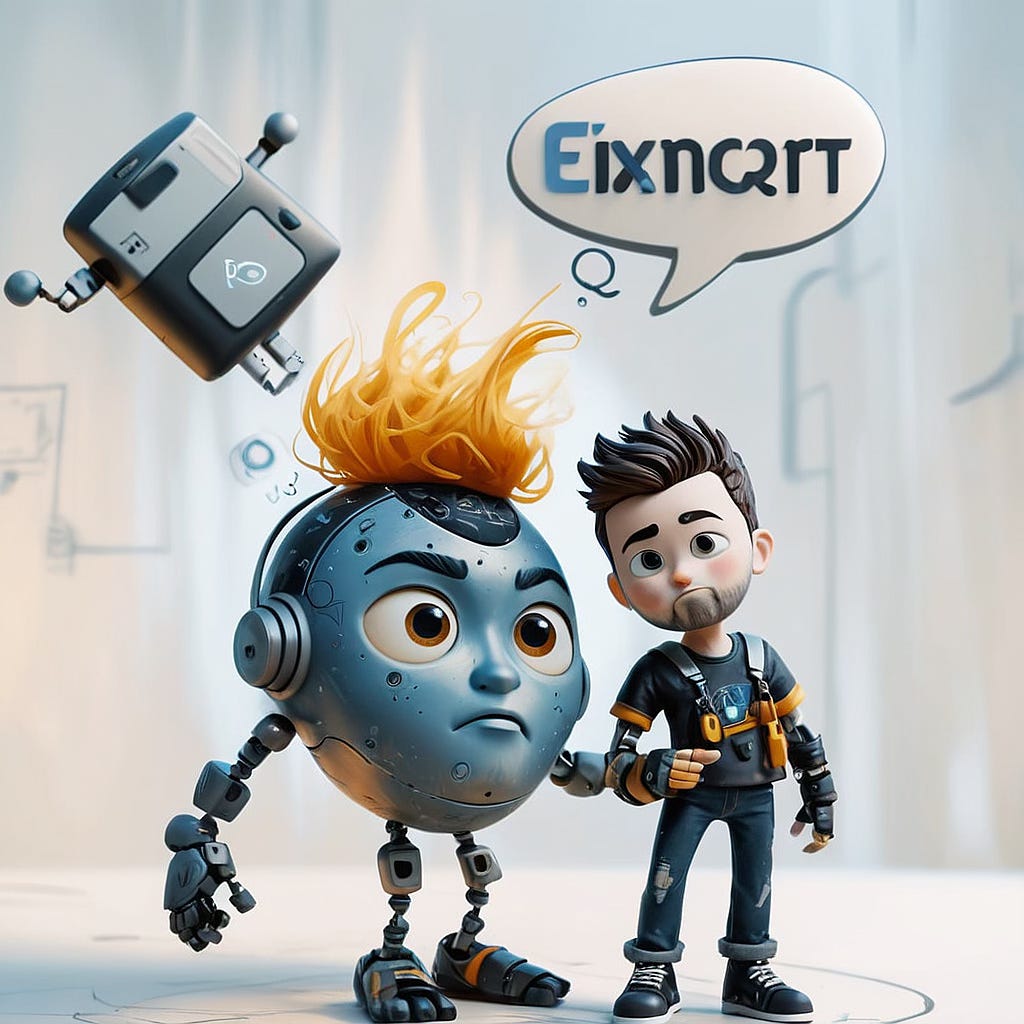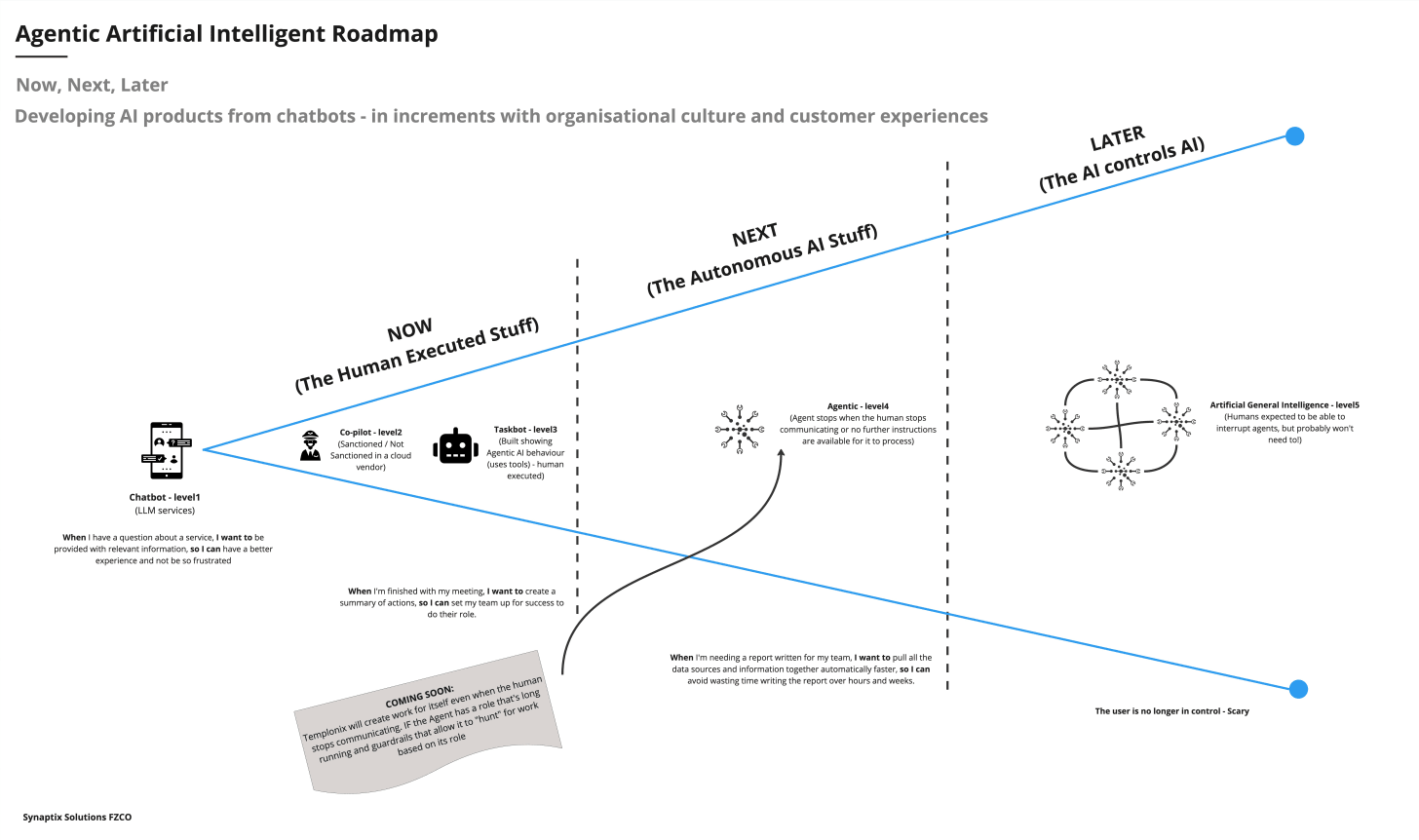Chatbot vs Copilot, vs Agent? Why most organisations choose the wrong solution
A veteran product designer's guide to match business problems with the right AI.
🚀 Quick Take (30-Second Summary)🚀
I often see that hype or FOMO drives the choice of AI implementation. I'll share my thoughts on failed AI projects. They were from efforts to match business needs with the right AI solution, be it a chatbot, a copilot, or an agent. You'll learn why standard approaches fail and why I created T2P2 to avoid common pitfalls.
The tech world loves its shiny new toys. Each day brings news of revolutionary AI. The pressure to "do something with AI" grows. After two decades in enterprise software design, I've learned this. Successful AI implementation isn't about chasing the latest features. It's about solving real business problems.
The Implementation Reality Check
Most organisations start their AI journey by asking the wrong question.
Instead of "Which AI solution should we build?" the real question should be "What problem are we actually trying to solve?"
After delivering on several enterprise projects, I've seen this mistake time and time again. It comes from the "shiny new toy" syndrome, and results in wasting months of development, frustrated customers and workforce.
A business must understand the limits of chatbots, co-pilots, and agentic AI. They can solve some problems, but not all. They also represent different approaches with a human-in-the-loop
Understanding the difference
The difference between chatbots, copilots, and agents isn't just tech specs. It's about matching AI capability to real business needs. Over my 20 years, I've watched organisations get a bit stuck with what value is released. Let me explain:
Chatbots: Your digital front desk staff. Perfect for handling those repetitive queries that flood your support channels. I've seen organisations try to stretch them beyond this remit. It's like watching someone try to perform heart surgery with a butter knife. It's technically possible, but painful for your customers. They excel at following scripts, but, they fall apart the moment context or nuanced language enter the chat.
Copilots: This is where things get interesting. Think of them as your AI sidekick, enhancing rather than replacing human expertise. In a recent project, a healthcare provider used a copilot system to helped analyse a complex set of data. This iterated their clinical process to operate 40% faster and cut errors by half. It also helped keep nurses in the loop for judgment calls to find patient behaviours.
Agents: These are the most advanced tier. They are autonomous systems and can reason through complex processes. Templonix implementations have taught me they thrive in guard-railed based complex environments. When Templonix was made it was designed to produce quality architecture docs for a complex NHS pathology clinical workflow. Templonix enabled coordination across systems, as it now helped technical decisions happen faster than normally required several human operators.
The T2P2 Protocol: Helping organisations to determine if they need Agentic AI
The T2P2 protocol arose from seeing many organisations rush to build AI. They did not grasp the impact they wanted to have. It's about matching solutions to reality, not aspirations. Let me share how this plays out in practice.
T2P2's Task Analysis begins with a brutal, honest assessment of workforce processes. In a recent healthcare project, I found their "complex" forecasting system. It was just four basic decision trees hidden under layers of legacy processes. This revelation shifted their focus. They now aimed to use a sophisticated AI to predict stock levels with high margins. This would save months of development time and deliver faster results.
Problem pattern recognition emerges as a logical consequence of this analysis. The patterns appear when you stop focusing on the tech and start examining the problem. A finance client insisted they needed an agent for asset management. Then, we mapped their dysfunctional process. They needed a copilot to help their buyers decide on assets, not to automate it.
Building for Scale
Here's the kicker. As organisations evolve, they will find a mix of AI tools. They must work together - this is currently called Artificial General Intelligence (AGI).
One thing is for sure from the signals I see, the future isn't a single super-intelligent agent. It's going to be an ecosystem of specialised AI tools, each matched to specific business needs.
Using T2P2 and Templonix's will help organisations understand whether they need a system of intelligent actors helps release value. It will also show them how to build a future state while saving quite possibly x100 on operational costs.
Key Takeaways
💡 Start with problems, not the shiny toy: An AI strategy should focus on business needs, not tech. I've seen simple chatbots beat complex agents. They were better suited to the problem.
🔄 Evolution Over Revolution: Build your AI capabilities in gradual steps. Today's copilot might become tomorrow's agent as your organisation grows.
🎯 Match tools to tasks: Not every problem needs an agent. Sometimes, a well-designed chatbot or copilot can deliver better results with less complexity.
⚡ Think scale and integration: Plan for your AI solutions to work together as your needs evolve. The goal isn't isolated tools, but an integrated ecosystem that releases more value.
Coming Next Week: My Agentic AI Playbook for releasing value
Next week, I'll share lessons on designing customer experiences with Agentic AI. I'll share a playbook from real-world implementations. It includes: surprising ways to interact with different AIs, patterns that drive adoption (and abandonment), and how to design experiences that provide value.
What makes a customer trust an AI agent versus becoming frustrated with it? The answers might surprise you.
If you're using AI or plan to soon, I'd love to hear about it and any challenges you're facing.
Drop a comment below or reach out directly; I read each response.
Until next time, Tim.






